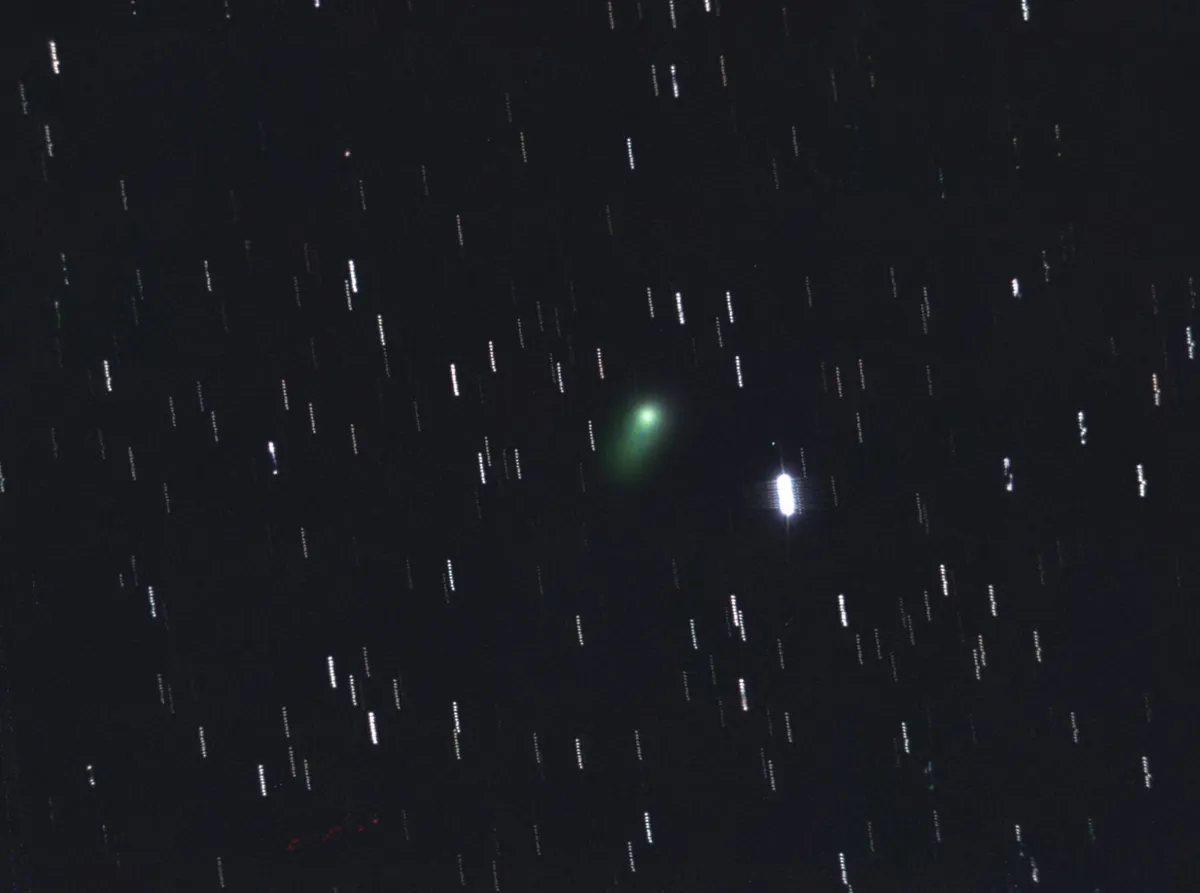Comet C/2020 V2 ZTF is currently visible through a telescope or large binoculars in pre-dawn skies.
At the start of July 2023 it is near Uranus, but the bright post-solstice sky may thwart attempts to see it properly.
As darkness returns, the comet shyly heads south to end the month east of the distorted pentagonal shape representing the head of Cetus, the Whale.
For regular stargazing advice, sign up to receive the BBC Sky at Night Magazine e-newsletter and listen to our weekly Star Diary podcast.

Comet C/2020 V2 ZTF in July
Although Comet C/2020 V2 ZTF will brighten in July 2o23, the bad news is that it’s not by much, starting the month at mag. +10.0 and ending it at +9.8.
The balance between position and sky brightness will be a tricky one and it’s probably not going to be a viable target until the last week of July.
Even then, it will remain challenging to view from more northerly locations.
As the end of the month approaches, the darker sky and the more elevated position of the comet before morning twilight engulfs it should make it a potential target in the early hours.

The Moon is in its first quarter phase on 25 July and although it tries to encroach on the comet at the very end of July, it should be possible to grab a short window of relative darkness after moonset.
The Moon will then interfere badly at the start of August (something we can happily put up with because it means it will be out of the way in mid-August, when the Perseid meteor shower reaches its peak).
As the Moon moves out of the way again in August, the comet will be in a better observing position, attaining a higher altitude in darker skies around mid- to late August.
Throughout much of August 2023, Comet C/2020 V2 ZTF is predicted to reach a magnitude of around +9.1, continuing its southern motion and ending the month near the mag. +3.9 star Eta (η) Eridani.
Comet C/2020 V2 ZTF in August

Comet C/2020 V2 ZTF is a small telescope target in August, heading south all month.
It stays more or less the same brightness throughout August, starting the month at mag. +9.8 and ending it at mag. +9.7.
Comet C/2020 V2 ZTF is an early morning object, starting its monthly track just east of the ‘head’ of Cetus the Whale, a pattern of stars conveniently located south of bright Jupiter.
Look for it 2.3° to the east-northeast of Menkar (Alpha (α) Ceti) on the morning of 1 August.
Its path then takes it south, arcing subtly west.
The Moon interferes with the view early in August, passing north of the comet at its last quarter phase, on the morning of 8 August.
This isn’t too much of a problem though, because the lost viewing time at the start of August is when the comet is very low from the UK.

As the Moon moves out of the way mid-month, this region of sky will appear higher before the onset of dawn.
On the morning of 17 August, C/2020 V2 ZTF is located near a triangle of sixth-magnitude stars 6.5° south of Menkar.
The triangle consists of 5 and 7 Eridani (mag. +5.5 and +6.1 respectively) together with mag. +5.2 HIP 13874.

A long-exposure photograph of this region may well show another comet which is travelling at right angles to the path of C/2020 V2 ZTF.
This fainter comet is C/2020 Y2 Atlas and is expected to be around mag. +16.5 at the time.
C/2020 V2 ZTF continues south, veering slightly further to the west as it goes.
It runs parallel to the line between Azha (Eta (η) Eridani) and Pi (π) Ceti between 26 August and 3 September.
Have you managed to photograph Comet C/2020 V2 ZTF? Don't forget to send us your images.
This guide originally appeared in the July and August 2023 issues of BBC Sky at Night Magazine

